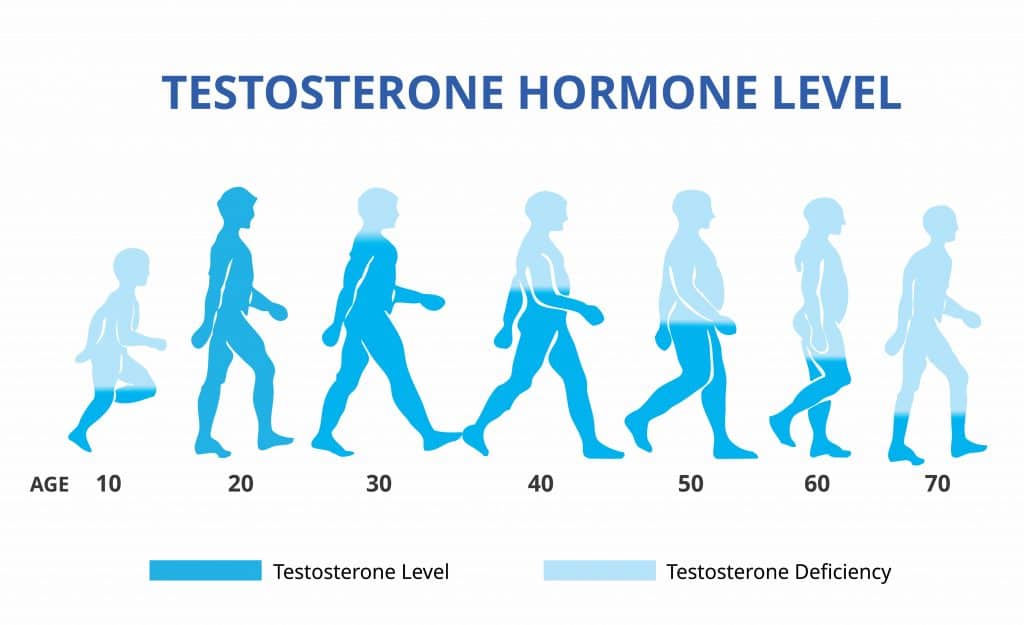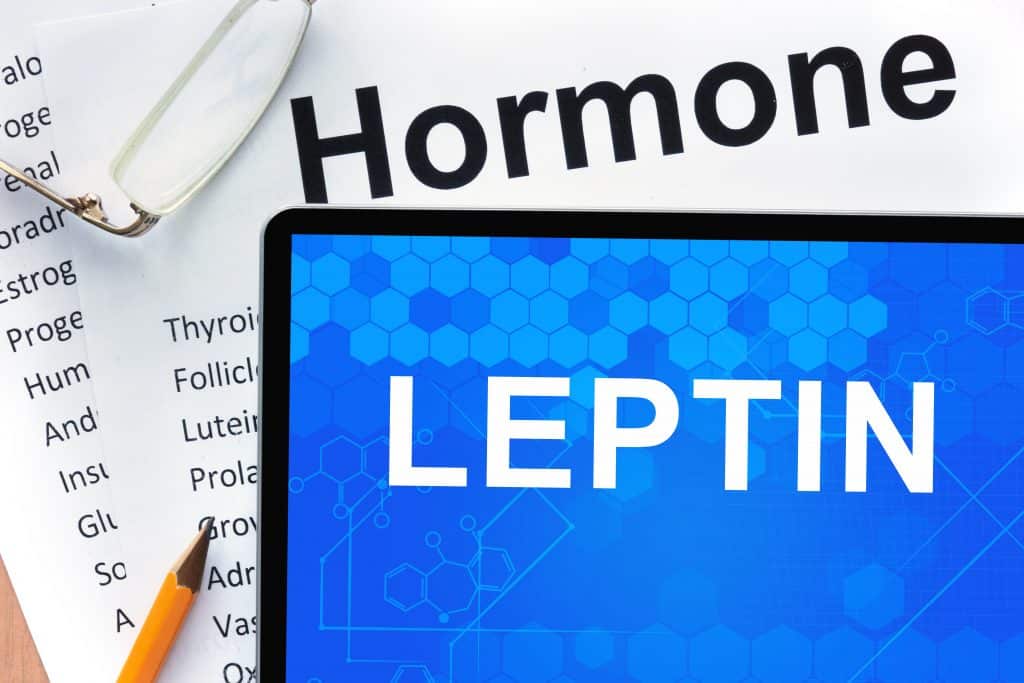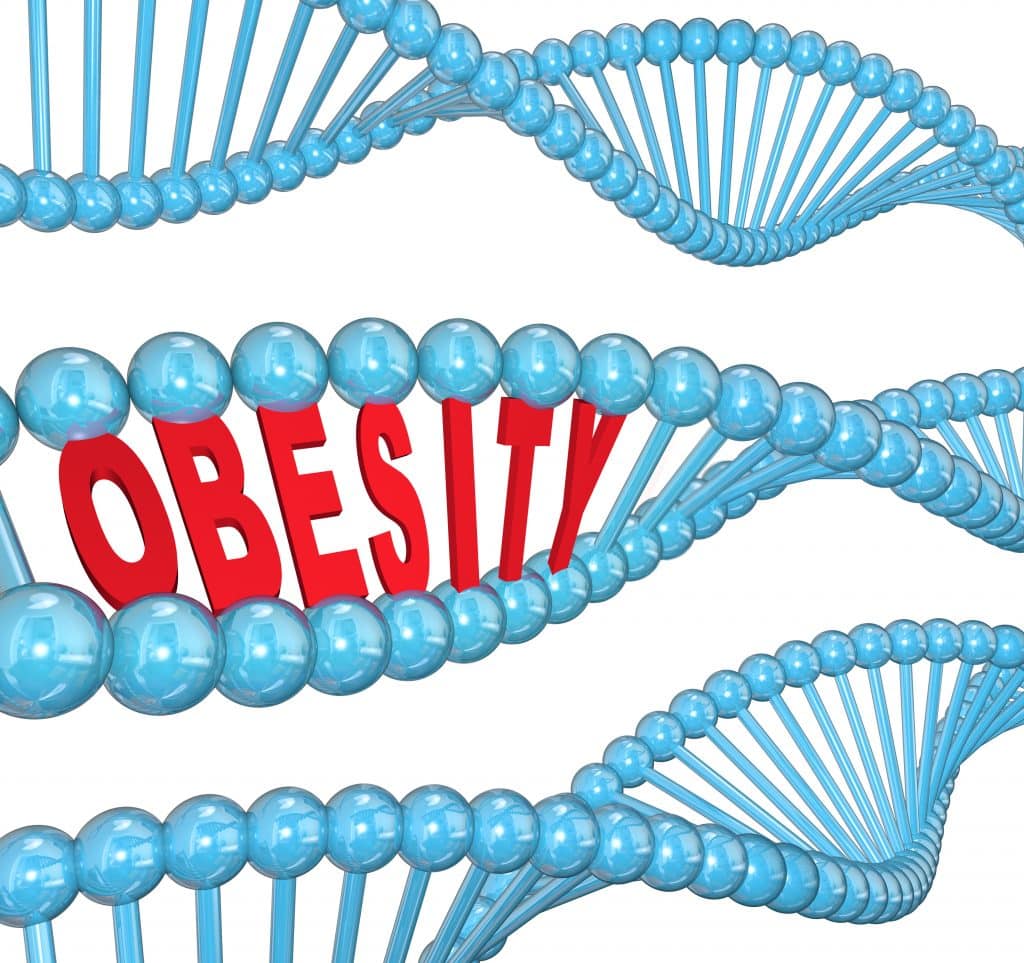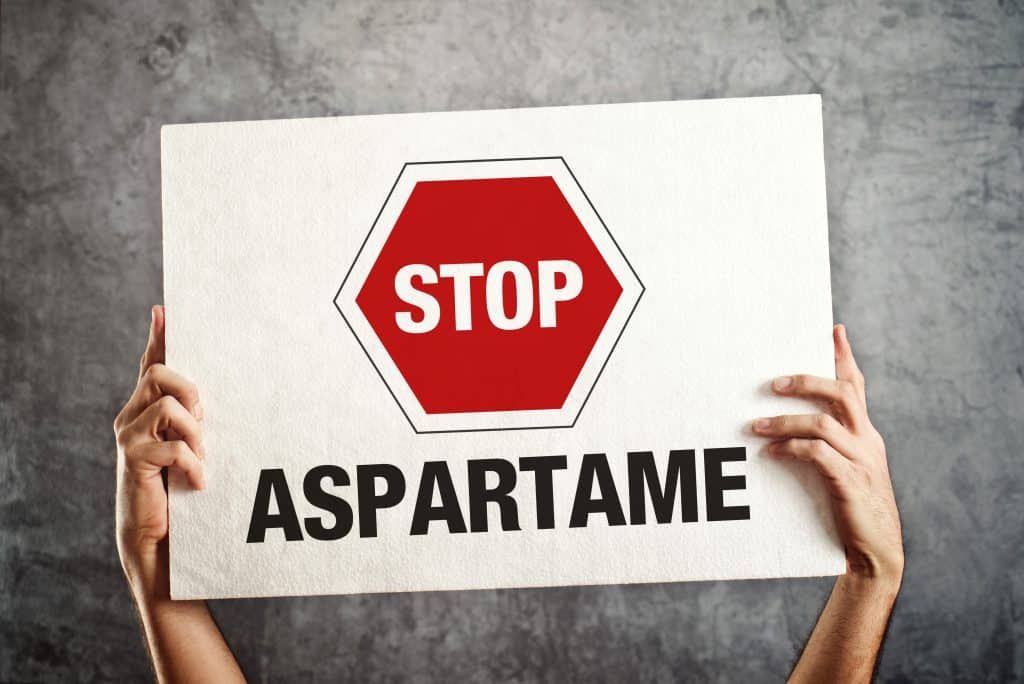The Real Reason You Can’t Lose Fat Will Surprise You
Why can’t I lose fat no matter what I try? I’m sure you’ve heard it all before, simply eat fewer calories and exercise more if you want to naturally lose weight. I’m here to tell you there’s more to it than that – a lot more.
Myths – Why You Can’t Lose Fat
Myth #1 – Chronic Caloric Restriction Burns Fat
Many believe that chronic caloric restriction is the solution to burning fat. However, a body in a chronically starved state reduces its metabolism in order to survive. As it does so, it burns muscle to nourish crucial organs like the brain. In an effort to stay alive, the body prefers to save as much fat as it can. This results in the classic skinny/fat look that isn’t at all healthy.
Myth #2 – You Can’t Lose Fat Because You Are Not Exercising Enough
Another classic myth of why you can’t lose fat is that you aren’t exercising enough. However, a Scientific American study demonstrated that exercise alone doesn’t lead to weight loss. In this study, it was shown that members from an overly active African tribe burned the same amount of calories as someone sitting on the couch all day.1

However, there are certain specific exercises that burn more fat than others and we’ll discuss that a bit more later.
Myth #3 – Eating Fat Makes You Fat
Eating fat doesn’t makes you fat if you are consuming the same calories as normal. Replacing carbohydrate calories with fat calories on a one-to-one basis doesn’t result in a net fat gain or loss.2
Not Being Able To Lose Fat Is Due To Hormone Dysfunction
The number one reason you can’t lose weight is that your endocrine system isn’t functioning properly. Hormone functions are all intertwined with each other and are subject to complicated feedback loops. If one hormone feedback loop isn’t functioning properly, it affects other hormones as well. When the endocrine system is out of balance, it makes it impossible to burn fat normally.
Weight Loss Resistance And High rT3 Levels
A properly functioning thyroid system is critical to being able to lose fat. However, thyroid dysfunction is so common that it almost seems normal. If the liver is unable to convert T4, the inactive version of thyroid hormone into T3, the active version of thyroid hormone, it is unable to relay its message to the cell.
Additionally, if the liver is converting T4 into rT3, otherwise known as reverse T3, an inactive version of T3, it is unable to function properly. Altered thyroid hormones are directly correlated with insulin resistance that in turn leads to undesired weight gain and more specifically, obesity.3 4
Here is more information about how thyroid function affects your health overall.
Low Testosterone Is Linked With The Inability To Lose Fat
Low testosterone levels are also linked with the inability to lose fat. This is one reason why aging men who are producing less testosterone often gain unwanted body fat and are unable to lose it.5 Additionally, testosterone levels across the board are considerably lower than they were at any recordable time in the past, resulting in an increase in obesity and many other health problems.6

Excessive Estrogen Leads To The Inability To Lose Fat
Excessive levels of estrogen also result in fat gain, in both males and females.7 The problem is further exemplified by estrogen-mimicking compounds that we will discuss later.
Leptin Resistance Leads To The Inability To Lose Fat
Leptin is a hormone that communicates with the brain to signal it to burn fat for energy. If the body’s systems are overloaded with toxins, the hormone leptin isn’t able to function correctly. As a result, the body cannot use stored fat for energy and instead continues to store it as excess fat.
Leptin is the primary signal from energy stores, acting as a negative feedback inhibitor of energy intake. Unfortunately, most individuals with diet-induced obesity (DIO) experience leptin resistance, meaning their circulating leptin levels are higher than normal and they are less sensitive to its effects. This can lead to an inability to regulate energy balance and can contribute to further weight gain.8

Systemic Inflammation Results In The Inability To Lose Fat
Obesity is associated with a state of low-grade systemic inflammation.9 Inflammation has been known to be the underlying factor behind a wide array of diseases and it also prevents normal fat metabolism so you are unable to properly burn fat.
Fat Loss And The Underlying Reason For Hormone Issues
Since hormone dysregulation is directly linked with both obesity and the inability to lose fat, we must repair endocrine system function if we want to address the core cause of weight loss resistance. To do that, we must look at the underlying reasons for hormone dysfunction.
Hormone Optimization Is The Key To Weight Loss
Hormone resistance is what happens when hormones are unable to connect with cellular receptors and relay their message to the cell. The reason why hormones are unable to communicate with the cell is due to cellular membrane inflammation. As the cellular membrane undergoes chronic inflammation, it is unable to allow hormones to dock in its receptors.
So, in order to get to the cause of weight loss resistance, we need to downregulate cellular inflammation so hormones can again relay their message to these cells.
What Is Causing Cellular Membrane Inflammation?
Cellular membrane inflammation is the result of accumulated toxins. Some of the main examples of toxins that are driving cellular membrane inflammation include exposure to mold and heavy metals like mercury and lead. Sources of toxic mercury and lead can be found in amalgam tooth fillings, seafood, body care products such as soaps and lotions, cookware, immunizations, and even drinking water.
Mercury is a potent neurotoxin that alters the function of the hypothalamic-pituitary gland. The hypothalamus is the control tower of the endocrine system and it is unable to regulate these systems when under the influence of toxic mercury. Specifically, “mercury alters thyroid hormone levels and the transcription of related HPT-axis genes, disturbing the normal process of thyroid hormone metabolism.”10
Mercury-induced inflammation results in the inability to lose fat, a lack of energy, and brain fog, among many other symptoms.
Remove The Source Of Inflammation – Restore Normal Fat Metabolism
Removing toxins like heavy metals from the body is a thorough process that will take years of dedication. However, patience is justified, as removing heavy metals from the body is the key to all-around good health, not just fat loss.
Here is more information on the process of removing heavy metals from the body.
Endocrine Disruptors – Toxins That Cause Obesity And Prevent Fat Loss
Endocrine-disrupting chemicals like BPA, phthalates, dioxins, perchlorate, PFAS, phytoestrogens, PBDE, PCB, and triclosan are in so many different products we use every day that it is nearly impossible to stay away from them.11 BPA is contained in the inner lining of canned foods, and some plastic bottles, and is even on receipts. Phthalates are added to nearly every commercialized personal care product, PVC, and many toys.12
BPA directly causes obesity by altering gene expression. Specifically, BPA leads to the expression of the Fat Agouti gene. Not only does this make the consumer obese, but the gene remains active in offspring as well.13

Fortunately, the Fat Agouti gene can be turned off through epigenetic methylation.
The Solution To Lose Fat And Reverse Weight Loss Resistance
Real and lasting fat loss is not possible when the body is in a state of toxicity, despite following a healthy diet and exercise regime. This is why we must remove the toxins that are causing endocrine disruption from our body first and foremost. Once we remove the cause, we can focus on optimizing the diet to permanently beat obesity.
The Proper Diet And Fat Loss
Before we focus on following the proper diet and how it will lead to fat loss, let’s first take a look at what food to avoid if you want to lose weight.

What Food To Avoid If You Want To Lose Fat
Remember the food pyramid? Throw that out the window if you want to lose fat and be as healthy as possible. First, avoid consuming excess sugar, especially fructose. Additionally, stop consuming grains if your ultimate goal is to lose weight.
Next, avoid consuming bad fats as they lead to weight gain and are downright toxic as you will soon see. What I define as bad fats may surprise you so pay close attention to this section.
Finally, stay away from the artificial sweetener aspartame, as it causes leptin resistance, leading to fat accumulation, ironic, as it is included in “diet” sodas.
Avoid Refined Polyunsaturated Fatty Acids (PUFAs) Found In Seed/Vegetable Oils
Polyunsaturated fatty acids (PUFAs) are essential for the body14 but have been consumed excessively in the modern area with the invention of refined seed based oils that have been marketed as vegetable oils, although they don’t contain any vegetables.
Between the years of 1959 and 2008, we witnessed a 2.5-fold increase in the consumption of the omega-6 fatty acid, linoleic acid, a polyunsaturated fatty acid, commonly found in vegetable oils. This resulted in linoleic acid occupying 21.5% of human fat tissue. During this time, the increase in linoleic acid within fat tissue correlated directly with the prevalence of obesity, and asthma.15

What Seed Oils Contain High Quantities Of Linoleic Acid?
Canola, corn, cottonseed, soy, safflower, and sunflower oil are all high in linoleic acid. Additionally, rice bran oil and grape seed oil are also high in linoleic acid.
These seed oils are unstable and are quickly oxidized. When PUFAs go rancid, they exhibit cytotoxic behavior, meaning they kill cells. Since PUFAs are unstable, even brand-new bottles of vegetable oils on the grocery store shelf may already be rancid. After these bottles of vegetable oil are opened and left to sit on your shelf, they oxidize even faster.16
Are Rancid Vegetable Oils Really That Bad?
In short, yes, new research suggests that oxidized linoleic acids found in vegetable oils are linked to coronary heart disease, the formation of atherosclerosis, tumor promotion, tumor initiation, cell death, and chronic inflammation.17 18 19 20 21 Oxidized linoleic acids are also linked to aortic plaque formation, while consumption of saturated fats was not.22
Since inflammation and obesity are linked, PUFAs are playing a role in fat loss resistance.
Aspartame Is Linked With The Inability To Lose Fat
The consumption of aspartame, commonly found in diet sodas and other artificially sweetened products, has been shown to increase the concentrations of both circulating insulin and leptin. This results in leptin resistance and is correlated with obesity.23

What To Eat To Lose Fat
Eating a combination of protein, healthy fats, vegetables, nuts, seeds, and fruit in moderation is the diet that our ancestors ate. Eat healthy fats from sources like grass-fed organic meat, nuts, avocados, olive oil, organic eggs, and grass-fed dairy.
Following a Keto Adaptation Diet along with my Cellular Weight Loss Diet encourages the body to burn fat for energy, improves the body’s ability to burn fat, and increases hormone sensitivity.
Eating a higher-fat, moderate protein, lower-carb diet helps the body transition from burning sugar for fuel to burning its own fat. This dietary shift keeps the body in a state of fat burning and helps promote weight loss. This type of diet is also known to reduce inflammation due to its higher fat content, which can range up to 60-80%. Protein intake should sit at around 15-30% and carbohydrates should be maintained at 10-20%.
How To Exercise To Lose Fat
Exercise is the cherry on top of the proverbial fat loss cake. However, not just any type of exercise will do, as aerobic exercise doesn’t have much of an effect on reducing body fat. On the other hand, high-intensity intermittent exercise (HIIE) like running sprints has been shown to reduce both abdominal and subcutaneous body fat. As an added bonus, HIIE reduces insulin resistance and improves glucose tolerance, both important for efficiently burning body fat.25

Lose Fat And Regain Your Health
As you can see, being able to lose fat is more complicated than just counting calories and exercising. If you want to lose fat, you must become an efficient fat burner by optimizing your hormones, avoiding endocrine-mimicking compounds, reducing systemic inflammation, avoiding toxic foods that are destroying your health, eating foods that build up your health, and performing high-intensity exercise.
References
1 Herman Pontzer, Ramon Durazo-Arvizu, Lara R. Dugas, Jacob Plange-Rhule, Pascal Bovet, Terrence E. Forrester, Estelle V. Lambert, Richard S. Cooper, Dale A. Schoeller, Amy Luke. Constrained Total Energy Expenditure and Metabolic Adaptation to Physical Activity in Adult Humans. Current Biology, 2016; DOI: 10.1016/j.cub.2015.12.046
2 Westerterp KR, Verboeket-van de Venne WP, Westerterp-Plantenga MS, Velthuis-te Wierik EJ, de Graaf C, Weststrate JA. Dietary fat and body fat: an intervention study. Int J Obes Relat Metab Disord. 1996 Nov;20(11):1022-6. PMID: 8923159.
3 Kapadia, K. B., Bhatt, P. A., & Shah, J. S. (2012). Association between altered thyroid state and insulin resistance. Journal of pharmacology & pharmacotherapeutics, 3(2), 156–160.
4 Longhi, S., & Radetti, G. (2013). Thyroid function and obesity. Journal of clinical research in pediatric endocrinology, 5 Suppl 1(Suppl 1), 40–44. https://doi.org/10.4274/jcrpe.856
5 Mogri, M., Dhindsa, S., Quattrin, T., Ghanim, H., & Dandona, P. (2013). Testosterone concentrations in young pubertal and post-pubertal obese males. Clinical endocrinology, 78(4), 593–599. https://doi.org/10.1111/cen.12018
6 Travison TG, Araujo AB, O’Donnell AB, Kupelian V, McKinlay JB. A population-level decline in serum testosterone levels in American men. J Clin Endocrinol Metab. 2007 Jan;92(1):196-202. doi: 10.1210/jc.2006-1375. Epub 2006 Oct 24. PMID: 17062768.
7 Grantham, J. P., & Henneberg, M. (2014). The Estrogen Hypothesis of Obesity. PLOS ONE, 9(6), e99776. https://doi.org/10.1371/journal.pone.0099776
8 Pan H, Guo J, Su Z. Advances in understanding the interrelations between leptin resistance and obesity. Physiol Behav. 2014 May 10;130:157-69. doi: 10.1016/j.physbeh.2014.04.003. Epub 2014 Apr 12. PMID: 24726399.
9 Forsythe LK, Wallace JM, Livingstone MB. Obesity and inflammation: the effects of weight loss. Nutr Res Rev. 2008 Dec;21(2):117-33. doi: 10.1017/S0954422408138732. PMID: 19087366.
10 Sun Y, Li Y, Liu Z, Chen Q. Environmentally relevant concentrations of mercury exposure alter thyroid hormone levels and gene expression in the hypothalamic-pituitary-thyroid axis of zebrafish larvae. Fish Physiol Biochem. 2018 Aug;44(4):1175-1183. doi: 10.1007/s10695-018-0504-2. Epub 2018 Apr 24. PMID: 29691693.
11 Endocrine Disruptors. (2022.). National Institute of Environmental Health Sciences. https://www.niehs.nih.gov/health/topics/agents/endocrine/index.cfm
12 Koniecki D, Wang R, Moody RP, Zhu J. Phthalates in cosmetic and personal care products: concentrations and possible dermal exposure. Environ Res. 2011 Apr;111(3):329-36. doi: 10.1016/j.envres.2011.01.013. Epub 2011 Feb 18. PMID: 21315328.
13 Neuroepic. (2022, June). BPA: Not A-gouti Thing for You –. https://neuroepic.mcdb.lsa.umich.edu/wp/14-bpa-not-a-gouti-thing-for-you/
14 Liu JJ, Green P, John Mann J, Rapoport SI, Sublette ME. Pathways of polyunsaturated fatty acid utilization: implications for brain function in neuropsychiatric health and disease. Brain Res. 2015 Feb 9;1597:220-46. doi: 10.1016/j.brainres.2014.11.059. Epub 2014 Dec 8. PMID: 25498862; PMCID: PMC4339314.
15 Guyenet SJ, Carlson SE. Increase in adipose tissue linoleic acid of US adults in the last half century. Adv Nutr 2015;6:660–4.doi:10.3945/an.115.009944
16 Yang L, Leung LK, Huang Y, Chen ZY. Oxidative stability of conjugated linoleic acid isomers. J Agric Food Chem. 2000 Aug;48(8):3072-6. doi: 10.1021/jf0003404. PMID: 10956070.
17 DiNicolantonio JJ, O’Keefe JH Omega-6 vegetable oils as a driver of coronary heart disease: the oxidized linoleic acid hypothesis Open Heart 2018;5:e000898. doi: 10.1136/openhrt-2018-000898
18 Silaste ML, Rantala M , Alfthan G , et al. Changes in dietary fat intake alter plasma levels of oxidized low-density lipoprotein and lipoprotein(a). Arterioscler Thromb Vasc Biol 2004;24:498–503.doi:10.1161/01.ATV.0000118012.64932.f4
19 Perjési P, Pintér Z, Gyöngyi Z, Ember I. Effect of rancid corn oil on some onco/suppressor gene expressions in vivo. A short-term study. Anticancer Res. 2002 Jan-Feb;22(1A):225-30. PMID: 12017293.
20 Zhang, Y., Xue, R., Zhang, Z. et al. Palmitic and linoleic acids induce ER stress and apoptosis in hepatoma cells. Lipids Health Dis 11, 1 (2012). https://doi.org/10.1186/1476-511X-11-1
21 University of Eastern Finland. (2019, January 15). Effects of linoleic acid on inflammatory response depend on genes. ScienceDaily. Retrieved January 8, 2023 from www.sciencedaily.com/releases/2019/01/190115124500.htm
22 Felton CV, Crook D, Davies MJ, Oliver MF. Dietary polyunsaturated fatty acids and composition of human aortic plaques. Lancet. 1994 Oct 29;344(8931):1195-6. doi: 10.1016/s0140-6736(94)90511-8. PMID: 7934543.
23 Artificial Sweeteners and Leptin; Impaired Lipid Storage and Starvation | NIH Intramural Research Program. (2014). https://irp.nih.gov/catalyst/22/3/artificial-sweeteners-and-leptin-impaired-lipid-storage-and-starvation
24 Landrigan PJ, Straif K. Aspartame and cancer – new evidence for causation. Environ Health. 2021 Apr 12;20(1):42. doi: 10.1186/s12940-021-00725-y. PMID: 33845854; PMCID: PMC8042911.
25 Boutcher S. H. (2011). High-intensity intermittent exercise and fat loss. Journal of obesity, 2011, 868305. https://doi.org/10.1155/2011/868305




